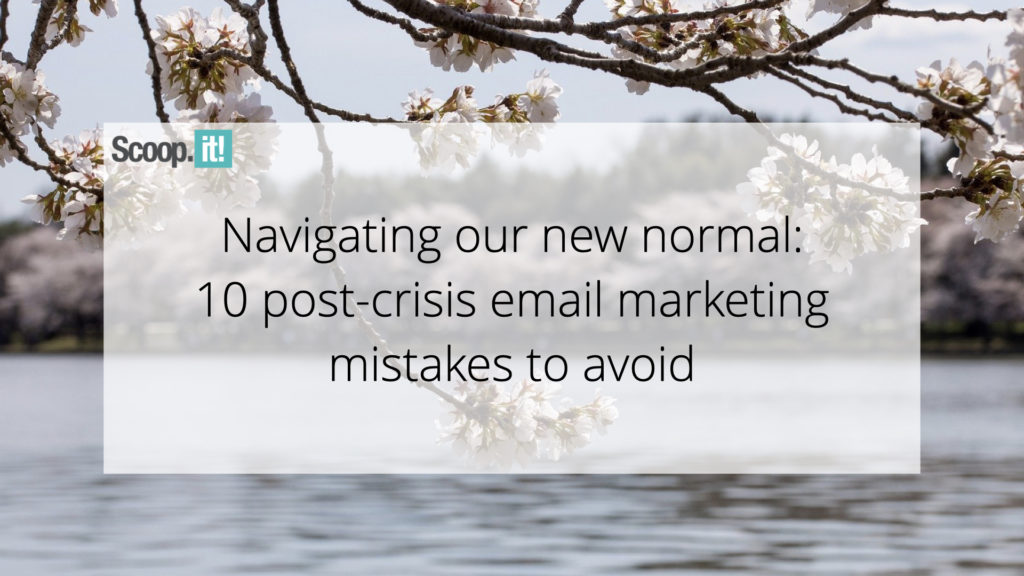Aligning Sales and Marketing Through Sales Enablement

Table of Contents
For some organizations, attempting to align your sales and marketing team feels like playing the lottery — you keep trying because the payoff would be huge; but deep down, you don’t expect it to happen. Sure, sales and marketing might collaborate on a few initiatives, but at the end of the day, they operate as two disparate organizations with their own unique processes, objectives, and performance metrics. It’s always been this way, so it’s destined to stay this way, right?
Unfortunately, by failing to align sales and marketing, you’re leaving money on the table. According to data shared by Inc., aligned sales and marketing organizations experienced 32% more annual revenue growth, while less-aligned companies saw an average 7% dip in revenue.
But how, exactly, can you unify these teams and create the meaningful results you know your brilliant sales and marketing folks are capable of achieving together?
The answer lies in effective sales enablement. At its core, sales enablement centralizes strategy, planning, execution and insights that your sales team can make actionable. Here’s what that looks like and guidance to help you finally get it right:
What Does High-Functioning and Aligned Sales and Marketing Look Like?
Given the gaps between most marketing and sales departments, it’s easy to assume alignment is impossible. But there are successful organizations that have cracked the code.
Sales Enablement Success Stories
For example, Kuno worked with an international company that lacked a solid process to work, audit and clean contact and company records within their HubSpot database. They also had Salesforce CRM working in a separate silo. When they wanted to integrate a new sales tool, they knew they needed to do some foundational work first and enlisted Kuno to lead the process.
We worked together to understand how traffic comes to the site all the way through closing a client. This helped us map Lifecycle Stages within HubSpot and identify how and when a contact would move to each new stage—as well as back and forth between the two systems, to either push prospects to Opportunities or continue nurturing them.
This change resulted in the necessary foundation for integrating ZoomInfo RevOS to HubSpot, which brought contacts into their tech stack with 50+ data points, providing the sales team with an arsenal of information to build sales pitches and objection-busting responses. It also allowed marketing to create more segmented emails and conversion points that did not need to ask for further demographic information (shortening forms).
In another instance, a manufacturer’s sales team felt the 30-40 MQLs driven through inbound efforts were not quality leads, essentially ignoring them. To prove their value, Kuno set the goal of enrolling 160 MQLs into sequences, hoping five would convert to SQLs (3%), with one turning into an Opportunity.
We utilized the HubSpot Sales automation platform to assign tasks for each MQL, including LinkedIn invitations, calls, emails and InMail, and kept a tight watch on identified micro and macro KPIs. In only three months, the sequences resulted in four opportunities, one of which closed in excess of $750,000.
Characteristics of high-functioning, well-aligned sales and marketing teams
Mutual respect
When departments are unified, there’s no mudslinging or blaming the other team when the organization falls short of its revenue goals. Instead, both departments have a firm grasp of the other’s roles and responsibilities and a healthy respect for their fellow professionals’ expertise.
Internal service level agreements
Highly-effective sales and marketing partnerships are often rooted in SLAs. These agreements outline each department’s responsibilities. For example, the marketing team may be responsible for delivering a set amount of qualified leads by a certain date each month or quarter. Additionally, the sales team may be responsible for reporting the outcome of each lead so marketing can optimize its methods or alter its criteria.
Shared data
As HubSpot notes, “The modern seller’s world is driven by data. But a constant stream of information can overwhelm sales reps and hurt productivity. Sales enablement professionals create systems to make data a true asset.” Aligned sales and marketing teams leverage closed-loop reporting. Because everyone has access to each others’ data, both teams can use shared insights to support better outcomes. This supports sales enablement by allowing marketing to identify where sales needs more support in the form of proposal templates, product one-sheeters, explainer videos, or other resources.
Content developed to solve real customer problems
In an organization with high-functioning sales and marketing teams, every piece of content is developed with a clear purpose based on a mutually agreed-upon customer journey. All sales reps understand how and when to use sales enablement content when guiding buyers down the funnel. In the same vein, sales content is cataloged and easy to find, preferably in one digital spot.
What Are Organizations Getting Wrong with Sales Enablement?
Unfortunately, most companies still make plenty of sales enablement mistakes, jeopardizing sales and marketing alignment. Usually, poor processes and ineffective technology are to blame.
Leaders tend to develop their sales processes early in a company’s lifecycle and fail to adjust those processes as the organization scales and evolves. Or, worse, they fail to document any processes at all.
Before you can tackle sales enablement, you need to define your process: determine whether it still supports your objectives and identify your biggest hurdles. Then, ensure the marketing team is clear on the process and existing obstacles so they can create relevant strategies to overcome them.
For example, suppose a SaaS company evaluates its pitch stage and discovers prospects often object to an offer by saying they don’t understand how the product can achieve their specific business goals. In that case, the marketing team may help by creating mid-funnel content, like case studies that demonstrate how the product achieves success for existing customers.
Of course, even if your company has an airtight sales process, technology can still undermine alignment. For example, if your CRM and marketing software aren’t properly integrated, it’s virtually impossible for sales and marketing to understand each others’ challenges or effectively track customer journeys. Harvard Business Review reported that every major B2B company invests millions each year in sales technologies, yet 62% of 167 companies surveyed recently by Bain & Company said the return on their investment fell short of expectations. What companies hoped would be an intelligent CRM ends up being used as a simple accounting and workflow management system.
Fortunately, this is fixable too.
3 Ways to Finally Achieve Sales and Marketing Alignment
While you may not be able to align your sales and marketing teams overnight, it’s not as complicated as you might expect. Here are three things you can do now to work toward more powerful sales enablement and an iron-clad partnership:
Assess Lead Scoring and Goal-Setting
A marketing team’s performance is often evaluated by how many leads they generate, while a sales team’s performance is assessed by how many leads they close. This can result in marketing teams delivering loads of unqualified leads and sales teams rejecting leads without explaining why.
One way to solve this challenge is by reassessing your lead scoring process and ensuring both teams agree on how values are assigned. Then, hold both teams accountable by setting clear goals. For example, you might set a goal that 60% of new revenue must be generated from marketing efforts and that sales must follow up with all SQLs within a set amount of time and report outcomes.
Teams with a vested interest in each others’ success will be more likely to work together. This fosters the sort of organic, problem-solving conversations that lead to powerful sales enablement tools and solutions.
Invest in the Right Technology
The technology you choose has a tremendous impact on how well your sales and marketing teams can align and your ability to deliver sales enablement at scale. When each department uses separate tech to manage their workflows, automate tasks, and track performance, it creates data and communication silos. And, without a shared space, it’s challenging to launch sales enablement content. The right CRM is critical and everyone across the company needs to know how to use it.
To break down these silos, ensure your sales and marketing tools integrate and allow for closed-loop reporting. If not, consider upgrading to a solution that does.
Celebrate Wins and Evaluate Losses Together
When you achieve your goals, don’t celebrate separately. Bring both teams together to acknowledge the win and recognize each department’s efforts. Similarly, when you fall short on marketing-influenced revenue or sales targets, dissect the issues as a unit and identify sales enablement opportunities for improvement moving forward. Facing wins and losses together helps end the ‘us vs. them’ mentality prevalent in many organizations.
Sales and marketing alignment isn’t a myth or a brass ring — it’s a critical initiative that can significantly boost revenue and ensure greater job satisfaction for everyone involved. By tackling alignment and prioritizing effective sales enablement, you’ll be better positioned to thrive now in our era of uncertainty and regardless of whatever the future may hold.
Let Our Experience in Sales Enablement Guide Your Business
At Kuno Creative, we know that sales enablement is about preparing your team for the sales process prospects expect and prefer. This means you should create informational content to provide answers to frequently asked questions, use automation to ensure prospects are followed up with at the right time and on the right channel, and provide the sales team with training and guidance on how to maximize these resources.
This is no easy task. That’s where Kuno can help.









